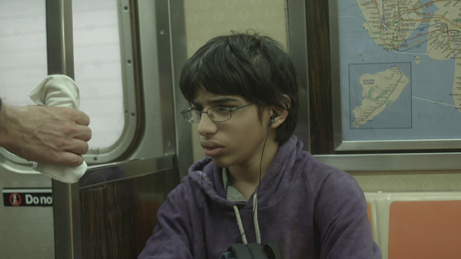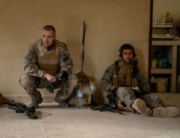Produced by Andrew Neel, Veronica Nickel, Dave Saltzman and Craig Shilowich
Written by Rose Lichter-Marck and Micah Bloomberg, based on a story by Lichter-Marck
Released by Oscilloscope Laboratories.
USA. 100 min. Not rated
With Andrea Suarez Paz, Jesus Sanchez-Velez, Azul Zorrilla, Tenoch Huerta Mejía and Marsha Stephanie Blake
![]() Director Sam Fleischner has created a movie with the look and feel of a freeform documentary. In fact, the story line is so successfully convincing that viewers will find themselves questioning why the cinematographers are not intervening to help the main character. (And one has to give credit here to the exceptional talent of the actors, as well.)
Director Sam Fleischner has created a movie with the look and feel of a freeform documentary. In fact, the story line is so successfully convincing that viewers will find themselves questioning why the cinematographers are not intervening to help the main character. (And one has to give credit here to the exceptional talent of the actors, as well.)
The story unfolds in the beachside neighborhood of Far Rockaway, Queens, where Mariana (Andrea Suarez) raises her two teenaged children alone while her husband works upstate. Her youngest, Ricky (Jesus Sanchez-Velez), is on the autism spectrum and needs regular supervision. Mariana is a housekeeper for a wealthy New Yorker, so Ricky’s older sister, Carla (Azul Zorrilla), is in charge of looking out for him after school. In her mid-teens, Carla is resentful of how caring for Ricky interferes with her social life. Ricky is aware of her feelings and how it strains her relationship with their mother. He’s also unhappy at school, and he begins to act out his frustrations. On a day when Carla fails to meet him after school, Ricky purposely wanders off. Fascinated by shapes and patterns, he winds up following someone, whose jacket bears an enigmatic circular symbol, down into the subway, where he spends days moving from train to train, becoming absorbed in the world around him.
Meanwhile, Mariana is frantic with worry, unable to forgive Carla for being so thoughtless, and frustrated with her husband for not demanding his pay and heading home to help her find Ricky. Despite her fear of involving the police and exposing the family’s undocumented status, she finally asks their help when her own searches prove fruitless, only to be told Ricky has to be missing for 72 hours before they’ll launch a formal search. Angry and powerless, Mariana withdraws into herself, shutting out her daughter and her husband.
Punctuated by occasional bouts of hunger, thirst, and the need to relieve himself, Ricky spends most of his days distracted by the sights and sounds that define his here and now. Fellow subway riders are endlessly varied and fascinating, although, with the exception of a very few, no one seems to pay much notice to him. He’s particularly attracted to shoes, so the camera angle frequently shifts to view the crowds from floor-to-knee height only. With very little dialog beyond the snatches of overheard conversations between subway travelers, it’s the cinematography and audio that are used to great effect to provide glimpses into what it might be like to live on the spectrum. Ricky’s mind, primarily concerned with the sensory and immediate, is juxtaposed with that of his frantic family’s overwhelming anxiety about his disappearance.
The imminent approach and arrival of Superstorm Sandy (which includes actual footage taken during the storm) serves as a fitting backdrop for the climax, and because it fits so neatly, it’s perhaps the most obviously fictionalized element of the entire film. Unflinchingly realistic, yet artfully presented in traditional story form, this is cinema verité meets fiction.

















Leave A Comment